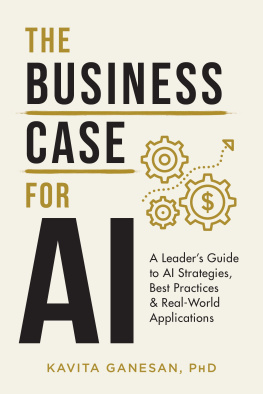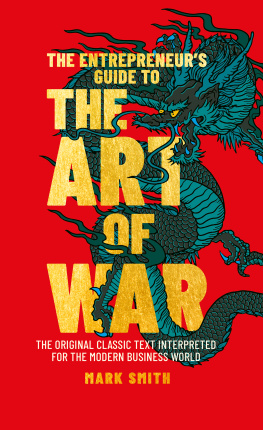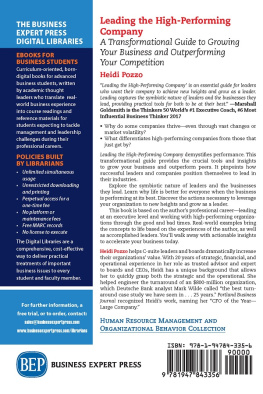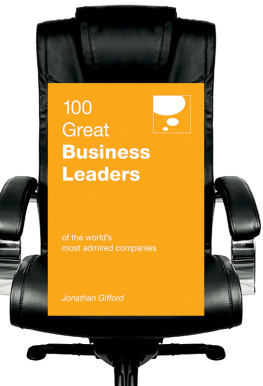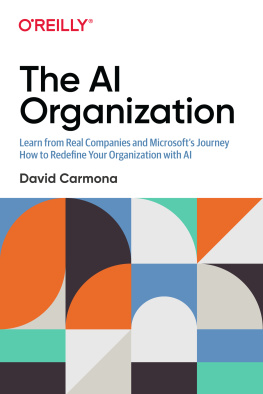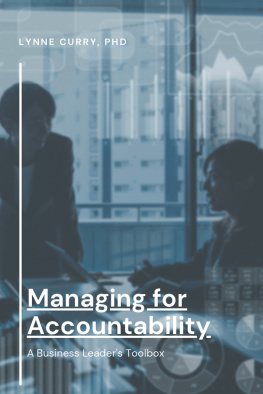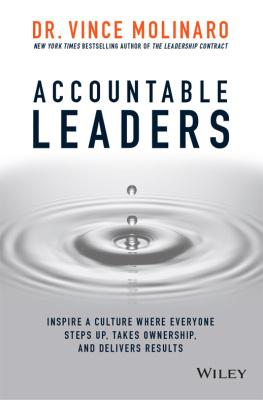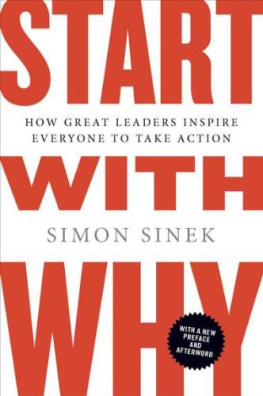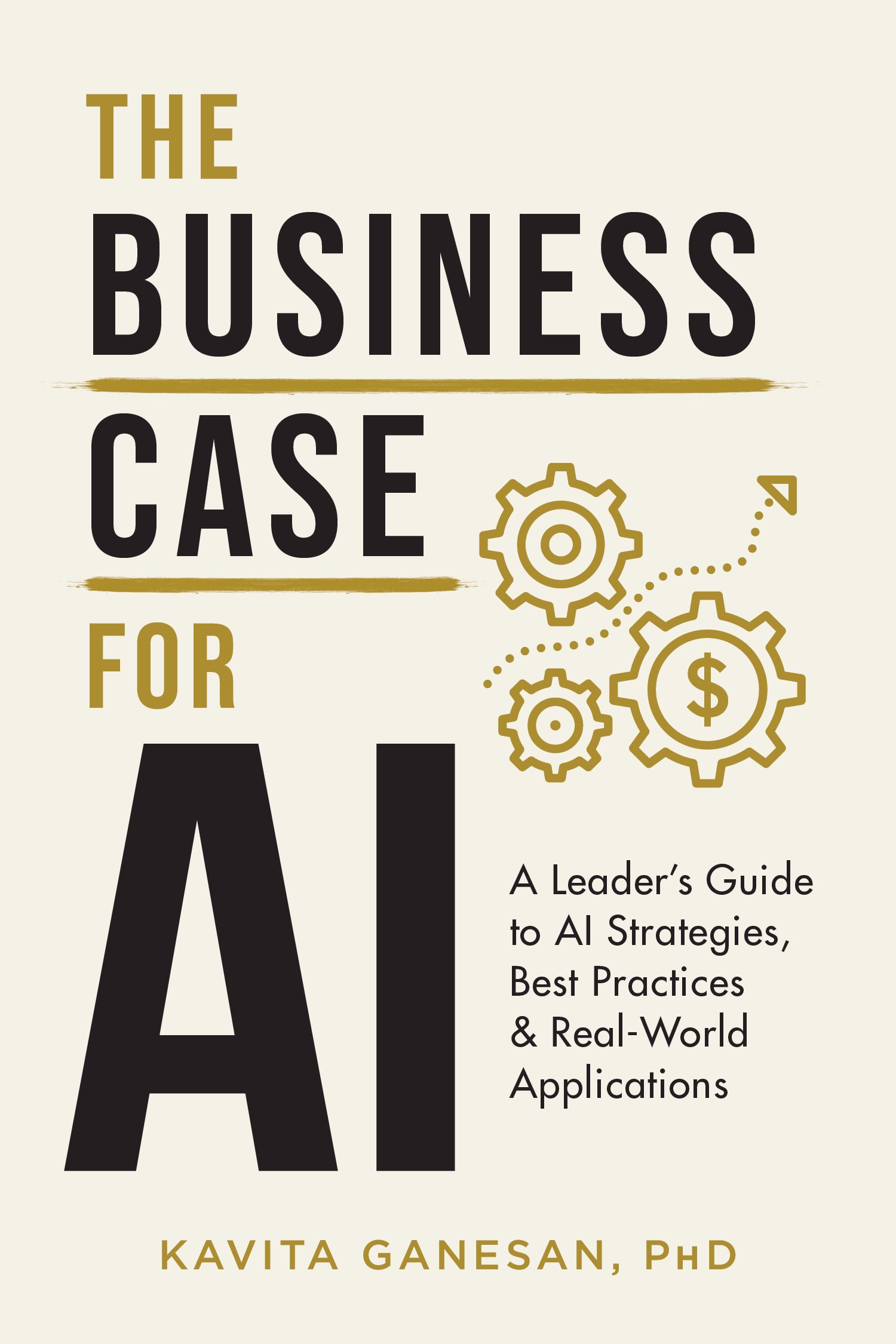

copyright 2022 kavita ganesan
All rights reserved.
the business case for ai
A Leader's Guide to AI Strategies, Best Practices & Real-World Applications
isbn 978-1-5445-2871-7 Hardcover
isbn 978-1-5445-2872-4 Paperback
isbn 978-1-5445-2873-1 Ebook
To all you executives, innovators, and business leaders looking to make AI an integral part of your organization, I hope this book finds you.
contents
Part 1: Frame Your AI Thinking
Part 2: Get AI Ideas Flowing
Part 3: Prepare for AI
Part 4: Find AI Opportunities
Part 5: Bring Your AI Vision to LifE
Introduction
Stop using AI.
Thats rightIve told several teams to stop and rethink .
AI is too expensive to be used on problems that are too small. Ones that couldve been solved with better software engineering or even manually. If youve been talked into using AI and youre yet to see a clear benefit, thats a sign youve been overpromised.
You couldve done without it.
With all the buzz and media hype around AI, youre probably overwhelmed. Theres an overload of information and misinformation surrounding AI. Some claim that AI is bad for humanity and will result in human extinction. Some say AI will replace all our jobs. Others say theyre using AI, but theyre not seeing benefits from it.
So, what can we believe about AI?
Theres a reason why some of this is happening. Were living in a time where theres limitless access to information. But most of this information is put out by marketers, ghostwriters, sales teams, and enthusiastsessentially people who have never done AI. And what about the people who are doing AI (the researchers and practitioners)? Theyre often talking about the latest techniques, focused on advancing the field or their skills. They arent the least bit worried about what AI can do for your business.
As a leader looking to build an AI-ready company or invest in new AI products, all this contradicting information and information overload can be intimidating. Are you supposed to focus on the technical stuff or the high-level stuff? The good news or the bad news? In the end, you may not want anything to do with AI as you fear investing in the wrong problems or putting your company at financial risk. Worse still, if initiatives fail, it just makes you look bad. The ethical dilemma of employees losing their jobs may further amplify your fears.
However, you know that if you dont attempt the necessary technological changes now, you may be in for a rocky ride in the futurewhen youre forced to adapt and innovate quickly. CTOs and CIOs come to me all the time and ask about the lowest-hanging fruits for AI in their company. Some worry if theyre investing in the right problems. Founders of AI startups wonder if theyre doing AI the right way. Nontechnical managers worry about job security, and they often contact me asking if, by using AI, theyre putting their own jobs at risk.
These worries are real and happen across the management spectrum.
I know that you want to remain personally competitive for the next decade or two to come, and you want your team or your enterprise to do the same.
But for this to happen, you need a starting pointa single source of truth of what this AI beast is and what it can do for your business.
You need to know:
- Where you can apply AI
- How, as a leader, you can start preparing your organization for AI
- How to find the right AI opportunities to invest in so youre not wasting time and money
- How to determine if your AI initiatives are generating meaningful outcomes
If such worries are keeping you up at night, then this book is for you.
Its specifically written to guide leaders in their journey to implement AI in the organization to get meaningful and measurable outcomes.
If you put all the knowledge, frameworks, and tips from this book to full use, over time, I make a big, bold promise that you will be able to transform your organization into an AI-ready and capable company. Although 85% of all AI projects are estimated to fail, youll start seeing more successes than failures. And instead of waiting for people to bring AI problems to your attention, youll start spotting AI opportunities independently. After a few successful initiatives, youll notice that youre experiencing the benefits of AIfrom a productivity, customer experience, and financial perspective.
This is not an empty promise; its certainly possible, but youll have to put in the hard work.
Who Am I?
My name is Kavita Ganesan, and Ive been doing AI since 2005long before AI became the mainstream topic that it is today.
Since then, Ive received a PhD in the field, done pure academic AI research, built AI products from scratch (yes, including the user interfaces), and led AI initiatives for Fortune 500 companies. Through my blog ( www.Kavita-Ganesan.com ), Ive been teaching AI to data scientists and software engineers around the world. More recently, Ive been coaching and training senior executives and product teams on getting value from AI. Ive helped some of these executives fix existing AI challenges in the organization, and Ive helped others develop strategies for the effective use of AI in their company. Ive put many of them on the path to success.
Being in the trenches and then out of them to train and help leaders leverage AI has given me tremendous visibility into problems in the field. Ive noticed one theme consistently showing up and holding companies back from realizing the value of AI, and that is disconnect .
Theres a considerable disconnect between what AI is at the leadership level and the reality at the implementation level. Ive witnessed numerous canceled projects, non-AI initiatives labeled as AI initiatives, and investments in AI initiatives with dismissible benefitsall due to this disconnect.
As a result, my relationship with clients almost always involves education at the leadership level, and all this happens before implementation or any sort of planning. I find that this often leads to more realistic expectations and the know-how to start small and iterate to make things better. This has helped many AI initiatives make steady and positive progress.
I firmly believe that the knowledge Ive been passing on to my clients, teams I teach, and blog readers should be more widely available and put in the context of todays businesses. Plus, from my experience, for most problems, AI development is the easy part. The hard part? Everything else that goes around it. For example, how do you find the right problems to solve? Or how do you know youre seeing benefits from your initiatives? And even, how to prepare for the adoption of AI as an organization?
This book will discuss many of these issues.
If you are the CIO, CTO, or any decision maker or influencer who possesses the lions share of technological understanding within your organization, this book will prepare you toward building an AI-ready and capable company. If you are an executive or founder whos been wondering about AI, this book will give you a breadth of AI understanding, application ideas for your business, and help you avoid common industry pitfalls. If youre an innovation manager, such as a product or project manager, this book will give you a general AI understanding and teach you how to navigate initiatives to maximize success.

